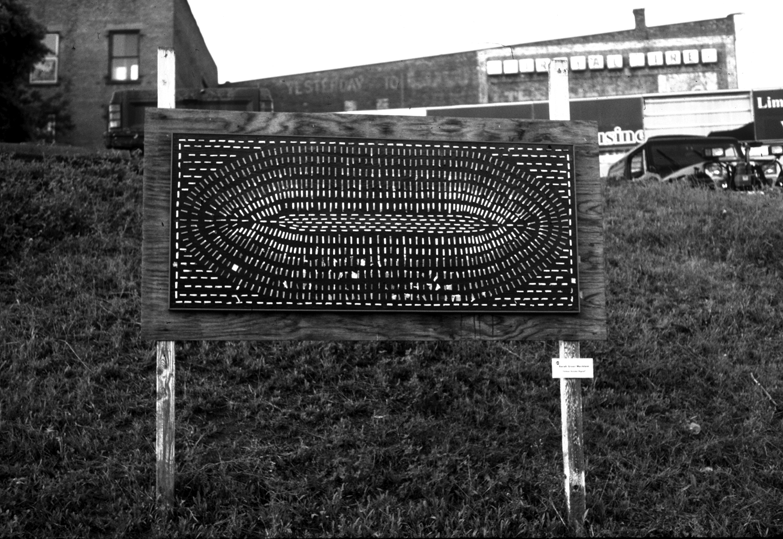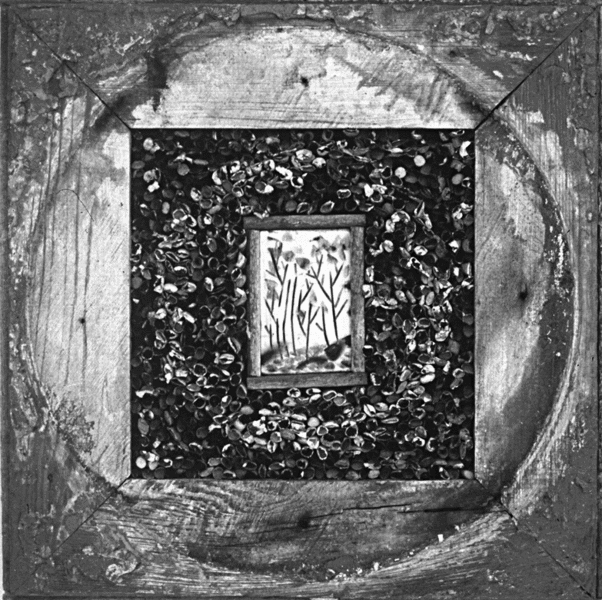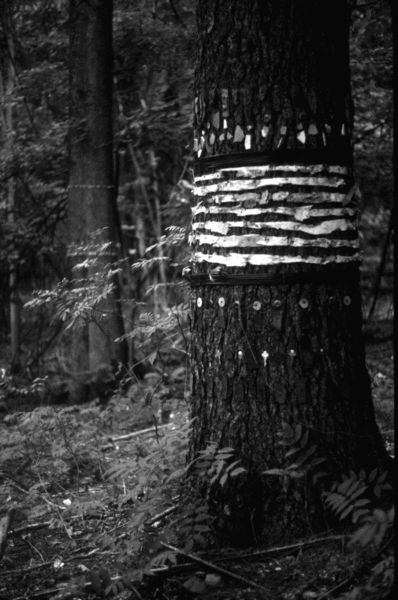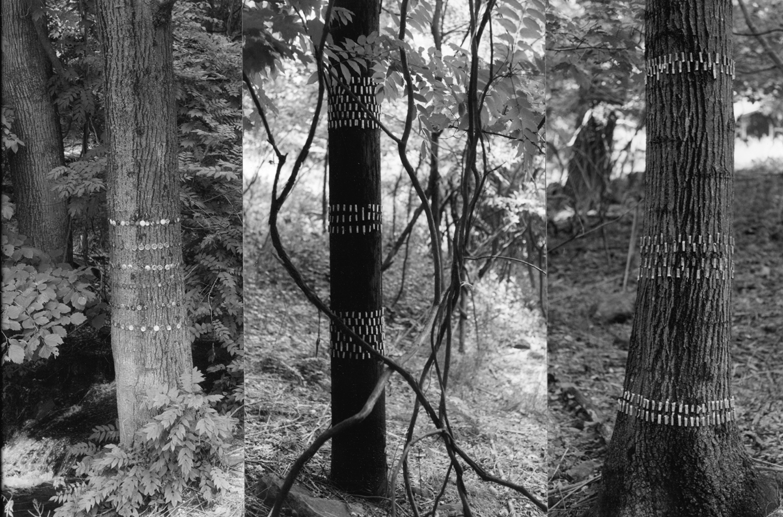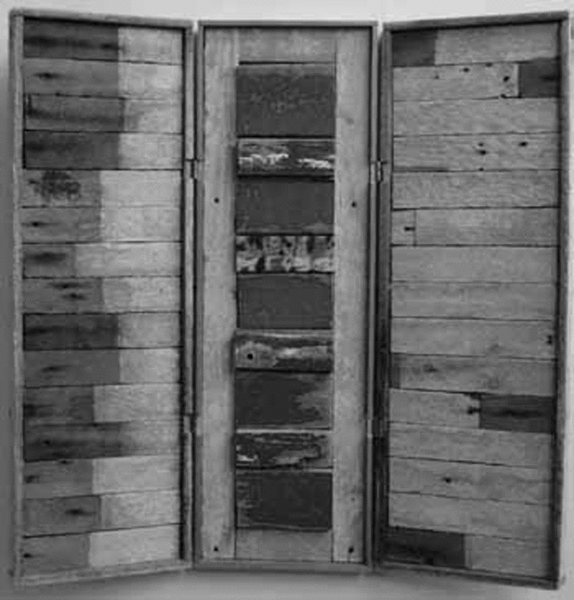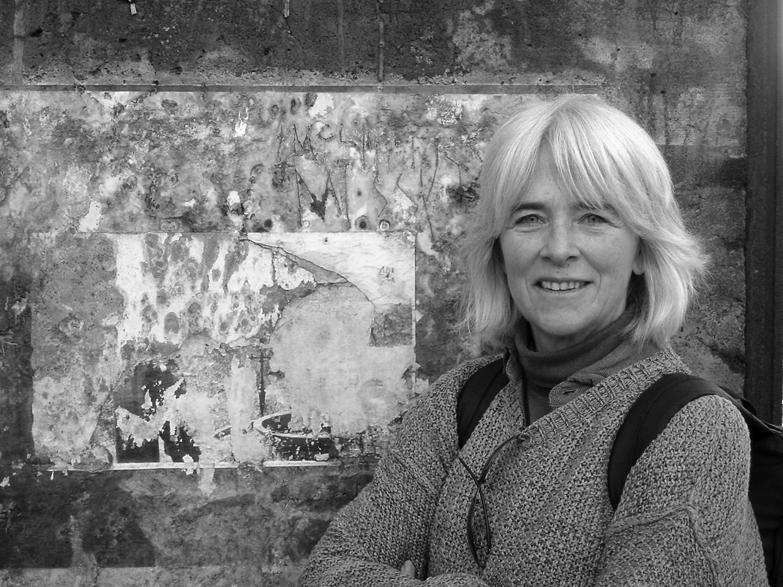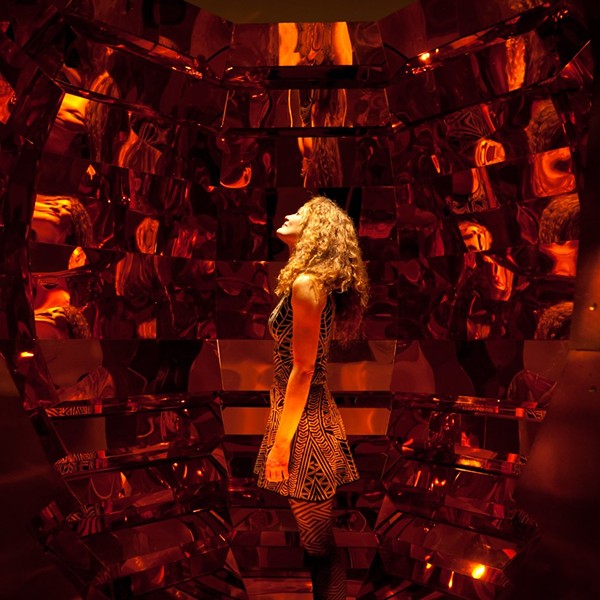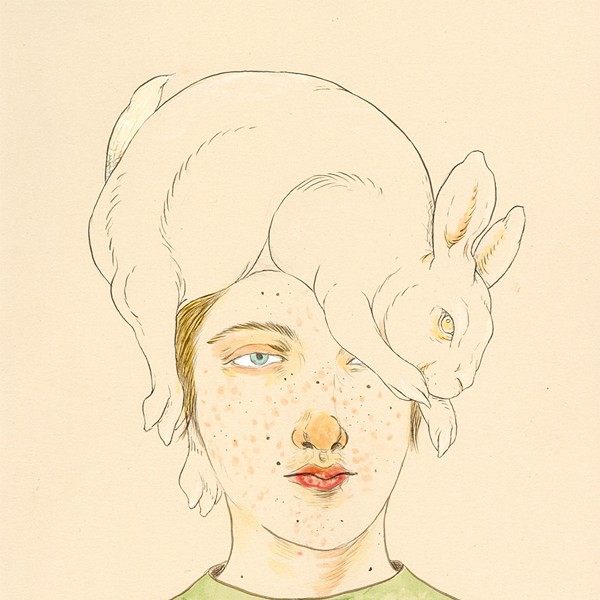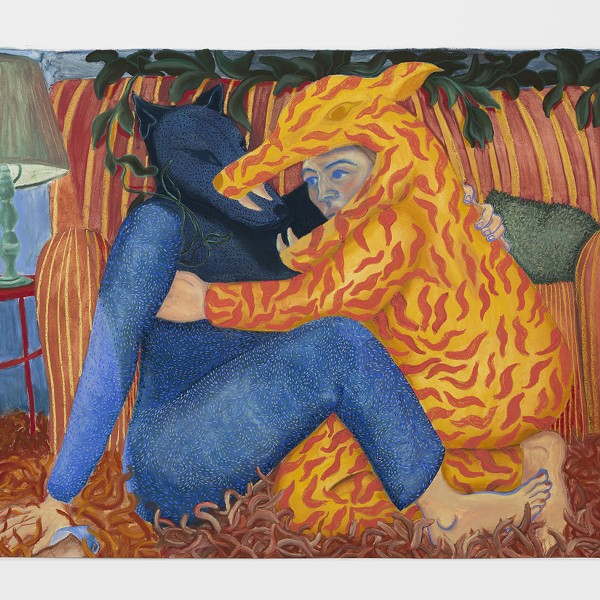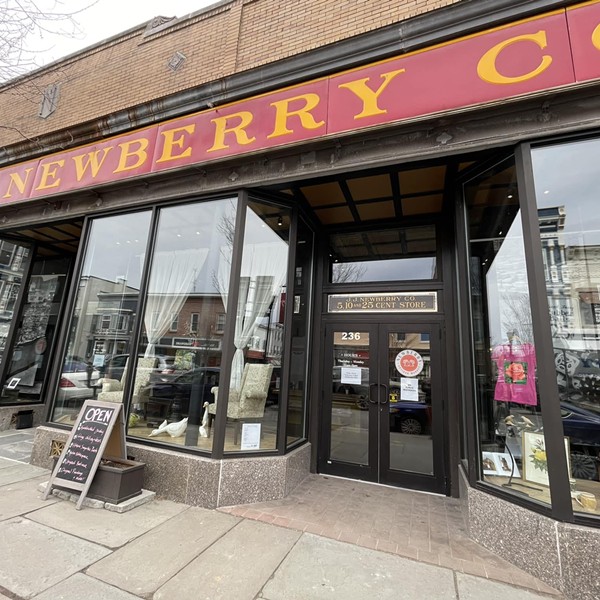Sarah Greer Mecklem is an artist whose life and career have always been intricately intertwined with the history and—more importantly—the experience of the Hudson Valley. Born in Kingston, she is the daughter of Austin Mecklem and Marianne Appel, two major figures from the Woodstock artistic community of yore, a magical scene that provided the backdrop for her early childhood. After the death of her father, Appel eventually moved Sarah and her sister Pixie to New York, in search of work to support them.
Having grown up in the city and attended Cooper Union, Mecklem tends to express the dual influences of the country and the city in her work, which embraces natural beauty and ecological concerns while bringing an urban edge to those issues. Crossing Paths: Smoke Rings, currently installed in “Paths: Real and Imagined,” the Byrdcliffe Outdoor Sculpture Show, involves collecting cigarette butts left behind in the forest by thoughtless nature seekers and tacking them in decorative patterns to the trunks of trees, simultaneously calling attention to them and making them beautiful. A companion piece, Compromise, uses discarded bottle caps in a similar fashion as part of the Kingston Sculpture Biennial 2007.
Ever the socially engaged artist, Mecklem runs the Art Garage at Waryas House in Poughkeepsie, providing art therapy for developmentally disabled men who also suffer from substance abuse.
—Beth E. Wilson
Growing up “Woodstock”
I thought everybody’s family were artists. When I came home from the Montessori nursery school, I had to draw. I would get home and break out the pencils—not just No. 2s but also the HB leads, the soft ones, and every other thing. So my earliest artistic sensations were about the quality of lines in pencil drawings. I remember loving sharp pencils. And my parents were in the studio, hanging out with friends like Reginald Wilson, or we’d go visit Ed and Jenny Chavez. I remember playing in Anton Refugier’s studio, and posing for him as a child (which my sister did, too). That’s what I thought people did. It was the rare person who ran a dry-cleaning shop, or whatever.
So what I guess many people would think were unusual things were just fun memories for me. I remember going to some of the festivals—at one, there was a playground merry-go-round (the kind you have to push), made with huge driftwood creatures, spinning around. There was one festival at Andy Lee Memorial Field, when I was six or seven, where I became the temporary tattoo marquee. Julio de Diego (and a couple of other artists) painted pictures all over me, and I marched around with a top hat and high heels, wearing a bikini bottom, to advertise the tattoos they were making.
Working artists/artists working
Back then, artists didn’t have two jobs. My parents could support the family by doing occasional design jobs, and sometimes some teaching, but the rest of their time was spent making their art. I remember spending a year in Buffalo when they taught at the Albright-Knox Art Gallery, and we came back when I was four—my father died a year and a half later.
My mother was a young widow, raising two kids, and managed to hold it together for about three years up here. But she basically stopped painting. She went after some design jobs, and started working for Bill Baird’s marionette studio. It was hard for her in such a small community—my sister and I wound up living at the Peter Pan Farm for two years, where they took care of families of kids at risk. Not quite a foster home, but a place for some support. It was run by Art Vos and his wife. In Holland, they’d been known for hiding Jewish children during the war. They had six kids of their own, plus a bunch of us. I think at one point there were 18 children there. It was about as wonderful an experience of that sort that anybody can have. (But, of course, I can also trace all my psychological problems back to that period!)
Returning to the mountain
The Overlook Mountain project was the beginning of my engagement of the outdoors as a source. The pivotal thing was going up there after [many] years (I had been there as a child when it was still intact), only to find when I came back that the roof was gone, the inside was gone, and there were all these trees growing in the rooms I’d explored as a kid. The idea that nature would move right back in when human efforts had failed struck a real note for me. First I started cleaning up a bit, trying to help the trees grow. People would come through and ask me what it had been, so I met with Alf Evers to get the real information. Through all this I had the idea to install photographs there to tell the story of the hotel. I received photographs from Alf and text and images from old brochures and articles, which I enlarged and installed in the ruins. I couldn’t do it at the scale I wanted (I had to carry everything in because you couldn’t even drive up there), and as I cleaned up I found debris to make assemblages and reliquaries that honored the hotel and its demise. People often ask me why I didn’t laminate or do something else to the images. The concept of putting the photographs up there unprotected was that they would continue to be exposed to the same elements as the building itself. That is also a conscious process in my work, letting it go. I’ve been documenting the decay, and collaging back into those images with photographs I’ve been taking. I’d like to do a swan song up there, but whether that will happen next is another issue.
Reduce/Reuse…
I like making trash into treasure, straw into gold. I’m very much nonmaterial. When I moved up from the city, I consolidated two studios, and I was amazed at how much stuff I had. I decided then to focus on working with reclaimed materials—wood lathed from renovating my house, not buying any new art supplies if I could help it. I resist the temptation to add things to the world.
When I was out hiking so much [during the Overlook project], I kept finding cigarette butts in the woods, where people had dropped them. I would wind up with cigarette butts in my pocket and didn’t want to just throw them out. People may take the Smoke Signals work as punitive, but it’s not—this is what we do to our environment. Whatever that message is, whatever the response is, the role of an artist is to create beauty and create an aesthetic environment and so on, but it’s also to make people look at things in a new way, a different way. Sometimes it’s through beauty, sometimes through adversarial imagery, to help people understand in a new light. So in that way [as an artist] you’re teaching in a subtler way, not didactically or pedagogically.
“The Men”
Through a whole series of unexpected circumstances, I wound up as the arts therapist at Waryas House in Poughkeepsie, which is a residential facility for developmentally disabled men who are also dealing with substance abuse. I established the Art Garage there, and I’ve been there for 12 years now.
The people I work with at Waryas House aren’t necessarily people who’ve chosen to make art—often there’s resistance from the beginning. It’s a challenge to help them find meaning in the most minimal creative effort, and to find their own possibility for artistic expression and communication. Some of them carry on with it beyond the program, and I’m amazed at how many of them really do become engaged in the art making. They love coming to the Art Garage after a while. It becomes a haven for them.







